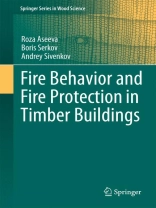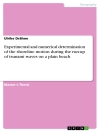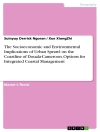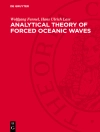This volume describes fire behavior and fire protection of timbers in outdoors and indoors application mainly in construction industry. The Authors’ novel approach considers the relationship between various species and age of timbers and its fire behavior at different thermal and fire loads. Quantitative data of ignition speed and flame propagation as well as generation of heat, smoke and toxic products are discussed. Analysis of fire resistance of various types of building materials based on timber of different species as well as the novel data on the effect of natural and accelerated aging of timbers on its fire behavior are discussed. The main practical methods of fire protection of new and ancient timber buildings and structures to increase its fire resistance are considered. The book should be useful for a wide range of readers: chemists, physicists, material scientists, architects, engineers, constructors and restorers.
Inhoudsopgave
Introduction.-
Part 1 Behavior of timber at high temperature heating and fire – Chapter 1: Specificity of structure and properties of different timber species.- 1.1. Macro- and microstructure of deciduous and coniferous timber species.- 1.2 Biological and genetic aspects of timber species diversity.- 1.3 Density and moisture of timber species.- 1.4 Thermal and physical properties of timber species.- 1.5 Effect of heating on mechanical properties of timber.- Chapter 2: Pyrolisis and oxidative decomposition of timber.- 2.1 Mechanism and macrokinetics of pyrolisis of timer.- 2.2 Decomposition of different timber species at thermal oxidation.- 2.3 Numerical models for decomposition and charring of timber.- Chapter 3: The ignition of timber.- 3.1 Smoldering and glowing ignition of timber.- 3.2 Spontaneous flaming ignition of different timber species.- 3.3 Piloted ignition of timber from radiant heater.- Chapter 4: Heat release characteristics and combustion heat of timber.- 4.1 Chemical composition and lowest heat of complete combustion of different timber species.- 4.2 Effect of fire conditions on heat release characteristics oftimber.- Chapter 5: Flame propagation on timber surface.- 5.1 Model approaches for flame propagation on carbonizing timber materials.- 5.2 Flame propagation on timber surface towards to direction of oxidizer flow.- 5.3 Flame propagation on timber surface at passing direction of oxidizer flow.- Chapter 6: Generation of smoke and toxic products at fire of timber.- 6.1 Characteristics of smoking ability of different timber species.- 6.2 Effect of timber combustion regime on toxicity of forming volatile products.-
Part 2: Fire safety and fire protection of timber buildings .- Chapter 7: Fire safety and fire resistance of timber building structures and constructions.- 7.1 General approaches to the system of fire safety in timber buildings and thermal fire regime’s assessment.- 7.2 Dynamics of change of fire hazard factors during fire growth and decay phase.- 7.3 Charring rate of different timber species and glued laminated timber at nominal fire exposure.- 7.4 Structure and thermo-physical properties of formed superficial char layers.- 7.5 Fire resistance of timber building members and charring depth.- Chapter 8: Fire protection of timber building structures and constructions
8.1Recent ways and means of fire protection to increase fire safety and fire resistance of timber building structures.- 8.2 Novel fire retardant impregnation compositions for treatment of timber.- 8.2.1 Effect of surface and deep of fire retardant impregnation of timber on fire safety characteristics.- 8.2.2 Charring parameters of different timber species with fire retardant treatment at standard fire regime.- 8.3 Fire protecting properties of novel environmental friendly intumescent coatings for timber based on plant raw material.- 8.3.1 Method of oxidative modification of plant raw material and some physicochemical characteristics of products.- 8.3.2 Effect of modification and type of plant raw material on fire protection efficiency of intumescent coatings.-
Part 3: Effect of natural and accelerated artificial aging on fire behavior of timber buildings .- Chapter 9: Effect of natural aging of timber building structures on fire behavior and fire safety.- 9.1 Transformations in physical structure, chemical composition and properties in old and ancient timber buildings.- 9.2 Effect of natural age duration on some fire safety characteristics of members of old and ancient timber buildings.- 9.3 Charring parameters and physical properties of char formed at fire action on old timber building structures.- 9.4 Biodegradation of solid timber and complex biological, moisture and fire protection of timber buildings.-Chapter 10: The changes in fire behavior timber based on different of wood species after accelerated artificial aging.- 10.1 Methods of accelerated artificial aging of timber.- 10.2 Results of physicochemical and thermal analysis of aged timber.- 10.3 Fire safety indices of artificial aged timber based on different wood species.- Conclusions.- Subject index.- Authors’ resumes.












